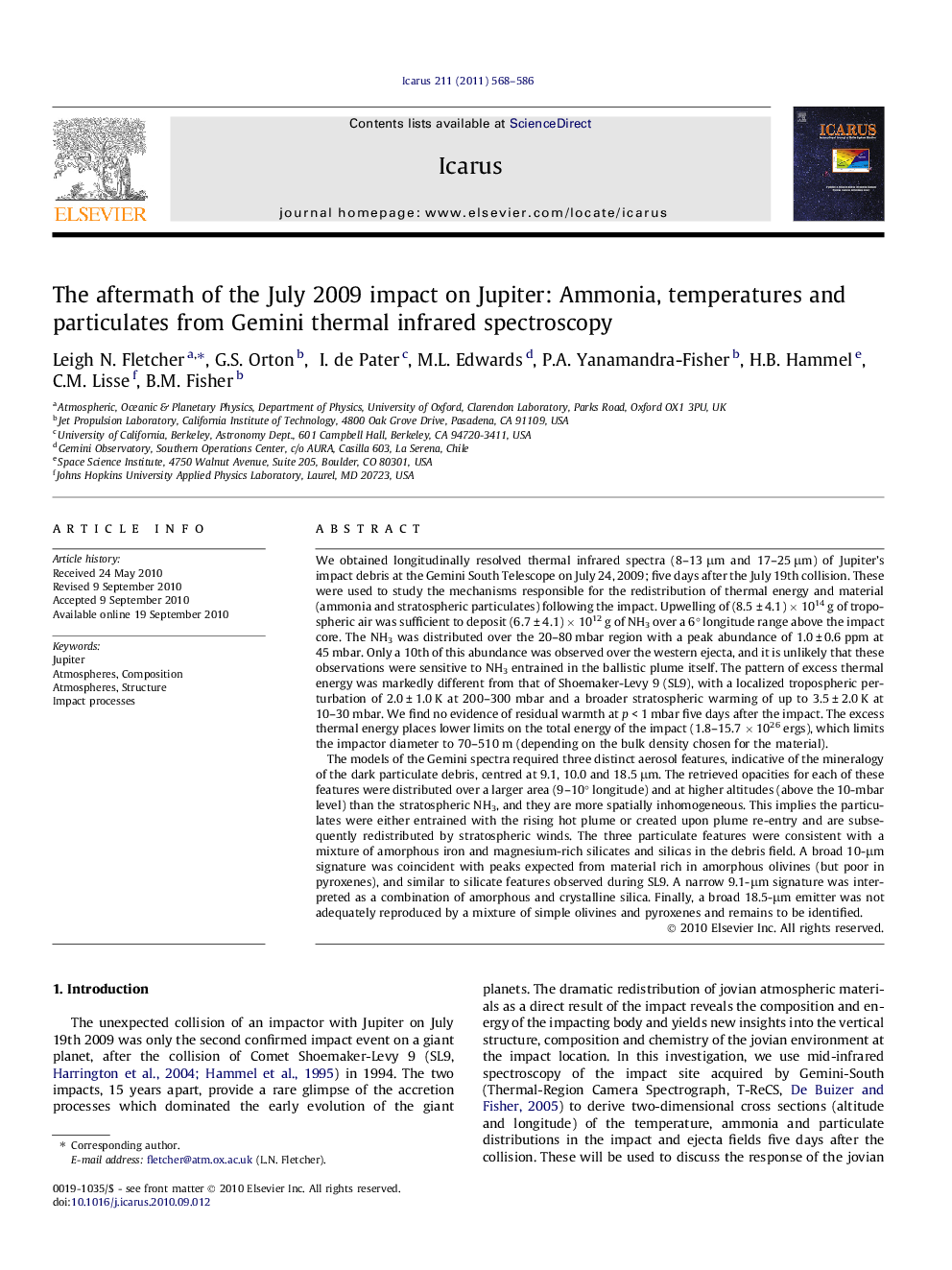| Article ID | Journal | Published Year | Pages | File Type |
|---|---|---|---|---|
| 1773795 | Icarus | 2011 | 19 Pages |
We obtained longitudinally resolved thermal infrared spectra (8–13 μm and 17–25 μm) of Jupiter’s impact debris at the Gemini South Telescope on July 24, 2009; five days after the July 19th collision. These were used to study the mechanisms responsible for the redistribution of thermal energy and material (ammonia and stratospheric particulates) following the impact. Upwelling of (8.5 ± 4.1) × 1014 g of tropospheric air was sufficient to deposit (6.7 ± 4.1) × 1012 g of NH3 over a 6° longitude range above the impact core. The NH3 was distributed over the 20–80 mbar region with a peak abundance of 1.0 ± 0.6 ppm at 45 mbar. Only a 10th of this abundance was observed over the western ejecta, and it is unlikely that these observations were sensitive to NH3 entrained in the ballistic plume itself. The pattern of excess thermal energy was markedly different from that of Shoemaker-Levy 9 (SL9), with a localized tropospheric perturbation of 2.0 ± 1.0 K at 200–300 mbar and a broader stratospheric warming of up to 3.5 ± 2.0 K at 10–30 mbar. We find no evidence of residual warmth at p < 1 mbar five days after the impact. The excess thermal energy places lower limits on the total energy of the impact (1.8–15.7 × 1026 ergs), which limits the impactor diameter to 70–510 m (depending on the bulk density chosen for the material).The models of the Gemini spectra required three distinct aerosol features, indicative of the mineralogy of the dark particulate debris, centred at 9.1, 10.0 and 18.5 μm. The retrieved opacities for each of these features were distributed over a larger area (9–10° longitude) and at higher altitudes (above the 10-mbar level) than the stratospheric NH3, and they are more spatially inhomogeneous. This implies the particulates were either entrained with the rising hot plume or created upon plume re-entry and are subsequently redistributed by stratospheric winds. The three particulate features were consistent with a mixture of amorphous iron and magnesium-rich silicates and silicas in the debris field. A broad 10-μm signature was coincident with peaks expected from material rich in amorphous olivines (but poor in pyroxenes), and similar to silicate features observed during SL9. A narrow 9.1-μm signature was interpreted as a combination of amorphous and crystalline silica. Finally, a broad 18.5-μm emitter was not adequately reproduced by a mixture of simple olivines and pyroxenes and remains to be identified.
